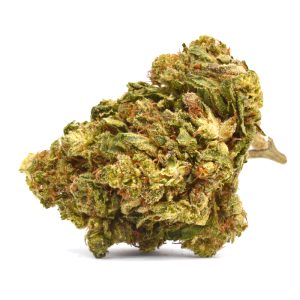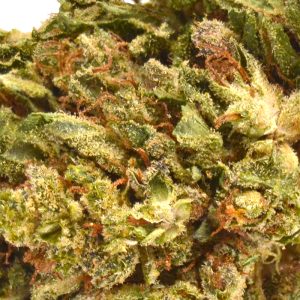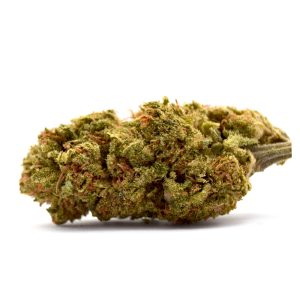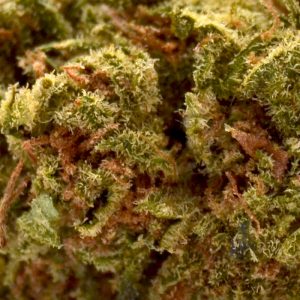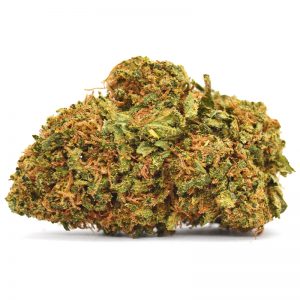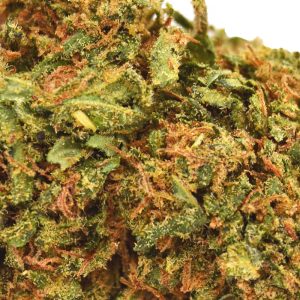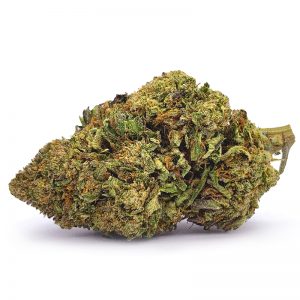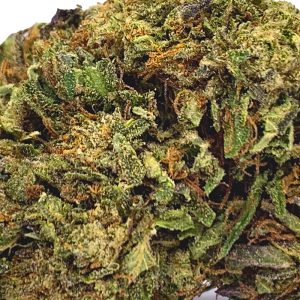Flower … What Is It Exactly? See Here

Flower
A term that refers to the smokable, cannabinoid-rich part of the female Cannabis sativa plant. It’s one of the oldest, most popular forms of cannabis consumption methods and can be smoked with a pipe, bong, or rolled in a joint or blunt.
“Suzy Q is an indica-dominant, super-high CBD flower; a personal favorite of mine.”
“I used to buy CBD pre-rolls from a local dispensary, but now I get some fresh flower and roll them myself.”
Forms of Flower
CBD (Hemp) Flower
These two terms refer to the same product, Flower derived from hemp that contains less than 0.3% THC. CBD flower (or hemp flower, hemp buds) comes from the hemp plant, the non-intoxicating form of cannabis. The female hemp plant produces flowers just like marijuana. The dominant cannabinoid in these buds is cannabidiol (CBD), so they are called CBD flowers.
CBD Flower with THC
States that sell recreational marijuana sell THC-dominant flower and CBD-dominant flower with higher percentages of THC. This type of flower is dominant in CBD or falls within the 1:1 CBD:THC ratio. As a component, THC is of the essence for patients who use cannabis for medicinal purposes. So, it’s important for users who want to avoid THC to know the difference between CBD hemp flower and CBD-dominant flower.
Indica CBD Flower
Like marijuana, hemp buds are typically classified as indica or sativa. Categorizing buds within these two varieties is based on terpenes, not cannabinoids. Terpenes cause the “sativa” or “indica” effect. Indica-dominant strains help you relax and are ideal for activities that require little to no physical effort. An awesome indica-dominant hemp strain that allows the user to wind down after a long day is Berry Blossom.
Sativa CBD Flower
Sativa-dominant CBD flower exhibit fruity aromas and are preferred during the day. Sativas are known to increase energy levels, giving the user an energy rush without making them paranoid or anxious. A great, organically grown sativa-dominant strain is Sour Space Candy.
Most Potent CBD Flower
The potency of CBD buds is increasing with each growing year. Breeders use different techniques to create the most potent strains. When cultivators started growing hemp for its flower, finding a strain with over 10% CBD was rare. Years later, we’re at the point where the average strain contains 15-20% CBD, and top-shelf strains go up to 25% CBD.
Loose Flower
The smokable part of the cannabis plant is also known as nuggets, nugs, or buds. To smoke it, users grind the buds before packing it and decarbying it by exposing the bugs to direct flame. Ground cannabis burns more evenly and is easier to handle, be it in a bowl or measured in a baking cup. Flower purchased on its own, without the leaves, stems, or seeds is known as loose. This term is pretty self-explanatory and refers to the detached or loose buds from the cannabis plant.
Pre-rolls
CBD buds also come for purchase in cylindrical or cone-like hemp cigarettes — from joints to pre-rolls and blunts. These products offer consumers a high-quality smoking experience without grinding, rolling, and packing. Pre-rolls can vary in quality, but most of them are packed with top-quality hemp with no stems and leaves.
Flower Quality
Top-Shelf
This term describes high-quality cannabis interchangeable with “fire,” “loud,” and “artisanal.” Growing top-shelf CBD flower requires attentive care and meticulous harvesting, which is why growers always focus on quality over quantity with this group. Top-shelf buds display intact geometry and an abundance of trichomes. If it’s excellent, “fire” hemp feels sticky to the touch, like cotton candy.
Bottom-Shelf
This term describes low-quality hemp sold in dispensaries as the cheapest, lowest-grade flower. Bottom-shelf hemp is great for people shopping on a budget and can deal with buds that contain seeds and stems. Top-shelf hemp tastes smooth when combusted, while bottom-shelf is harsh on the throat. It’s also old and has a brown coloration with few crystalline trichomes.
Smoking Methods
Joints and Blunts
Joints and blunts are the most convenient and quick ways of cannabis consumption. Users love them because they’re easy to make and consume. Some buy them pre-made while others buy the necessary equipment to make them: from grinders and papers to blunt wraps and crutches.
Pipes and Bongs
Pipes and bongs provide users with a constant and reusable method of combustion of flower. Perfect for traveling, pipes are one of the most discreet ways of using hemp buds: grind it, pack it into a bowl, and light up. Most pipes are made of glass or quartz but can also be ceramic, metal, wooden, or silicone.
Unlike pipes, bongs are a bit more complex but readily available methods of indulgence in hemp flower. Bongs are devices that work on water or ice to create smoke for inhalation. They contain a bowl where the user puts the ground cannabis and inhales the smoke through the mouthpiece.
This device is available in a range of shapes and sizes and can also be custom-made. The most quality ones are created from quartz, but the materials range from glass to plastic, ceramic, bamboo, metal, and silicone. Some users even make their own bongs from empty water bottles and fresh apples.
Vaporizers
Vaping is a go-to method for consuming CBD buds with the use of a vaporizer device. Like bongs and pipes, a vaporizer for smoking herb, not concentrates, can be purchased online or at a local dispensary. Vaporizers come as vape pens, portable vaporizers, and tabletop vaporizers, and all use vaporization to activate cannabinoids. This method is considered less harsh when compared to combustion because it prevents the user from directly inhaling the combusted material.
Vaporizers use two main methods to heat the plant material for use: conduction and convection. Those using conduction work with battery-powered heating chambers to release vapor. The latter use the convection method, which includes heating air and passing it through the cannabis to minimize the chances of combustion. This maximizes the user’s control over temperature adjustments. A vaporizer that works on the convection method results in a smoother hit and is often found in more expensive vaporizers.
Proper Storage
Proper storage of CBD flower is key to maintaining them fresh and potent. Keeping it in a long-lasting, airtight container (mason jar) will help minimize environmental influences and exposure to heat, oxygen, moisture, or UV light. Airtight containers are excellent options for premium storage because they maintain consistent levels of humidity. When stored properly, dried hemp keeps for 6 months to a year.
How to Recognize Flower Degradation
It changes color, smell, and taste. Here’s how to tell.
Color
Fresh flower have compact, lush buds that radiate bright greens, purples, and oranges. Over time, the exuberant buds turn into decayed lumps of khaki green. The good news is, if left intact, despite losing its evocative colors, its trichomes remain unharmed.
Smell
Hemp left in a jar will, over time, either change its smell for the worst or lose it entirely. It can become either too dry or too moist. When left to their own devices in a jar, CBD buds can produce a rather unpleasant aroma that may shock even seasoned consumers. Exposing it to fresh oxygen flushes the container of the stale, fermented air that may be caused by hay or parchment paper.
Taste
Aged and desiccated buds pack a sharp punch for some, while for others, don’t stand apart from fresh flower. Old hemp buds tend to taste more earthy than fresh produce due to cannabinoid degradation. This means that over time, CBDA degrades into CBD and THCA breaks down into THC and then CBN. When cannabinoids degrade, buds tend to lose their potency.
Anatomy of a Hemp Flower
Trichomes
Trichomes are fine, hair-like outgrowths on hemp buds. The term trichome originates from the Greek word “Tríchōma,” which means growth of hair. They have a crystallike appearance and work as a defense mechanism. These structures are found across plants in botany and serve a diverse set of functions. In some plants, they serve as digestive traps, while in others they protect plants from encroaching frost or wind.
In hemp plants, these crystallike growths house the majority of the plant’s resin responsible for creating the terpenes and cannabinoids. In the past, people thought that the cannabinoids were produced by the green plant tissue and then transported outward to the trichomes during the flowering stage. Intensive research debunked this theory as researchers discovered that the trichomes make the terpenes and cannabinoids.
Bracts
The bract of a flower encapsulates a female plant’s reproductive parts. In hemp plants, bracts surround the flower’s inflorescence — a cluster of flowers arranged along a stem. These structures resemble the shape of a leaf but are different from normal petals. As specialized leaves, they protect the flower structure in regular plants. In hemp, they are also part of the flower.
Calyx
Due to their similarity, the calyx of the hemp plant can often be confused with its bracts. The calyx forms first and is made of tiny leaves that form a spiral-like structure close to where the flower blends into the stem.
Calyxes are made of sepals — tinier leaves that shield the flower’s base. These structures offer rigidity and structural protection that guards the flower’s reproductive organs against external damage. The calyx is extremely valuable in hemp because it holds the flower’s pistils and the majority of the trichomes, which makes them the most resinous portion of the cannabis flower.
Sugar Leaves (Leaflets)
Sugar leaves are leaflike parts of a compound leaf that structurally resemble an entire leaf. A compound leaf counts more than one leaflet that can often come in odd pairings of three or five.
The compound leaf is one of the symbols of cannabis. The leaf resembles a hand splayed against a background where each finger represents a leaflet or sugar leaf, together creating one leaf. Across botany, sugar leaves vary in morphology, but structurally they are the same. Growers trim these structures from the final product, but they are often used to make concentrates.
Pistil (Stigma)
The pistil of the hemp plant contains the plant’s female organs and is made up of the stigma, style, and ovary. The pistil is a lengthy distinct organ found at the center of the flower coated in resin that receives pollen to ensure fertilization and seed production. These structures may take different shapes across various cannabis cultivars but have an identical reproductive function.
Stigma is a sticky, hair-like projection that grows out of the pistil and collects pollen. In the wild, pistils are of the essence to the plant because they collect the pollen that provides the hemp plant with the material to grow seeds. For growers, they serve little to no purpose.
Final Thoughts
Hemp flower (or CBD buds, hemp nugs) is a non-intoxicating, dried, and cured product of mature Cannabis sativa plants containing less than 0.3% THC.

